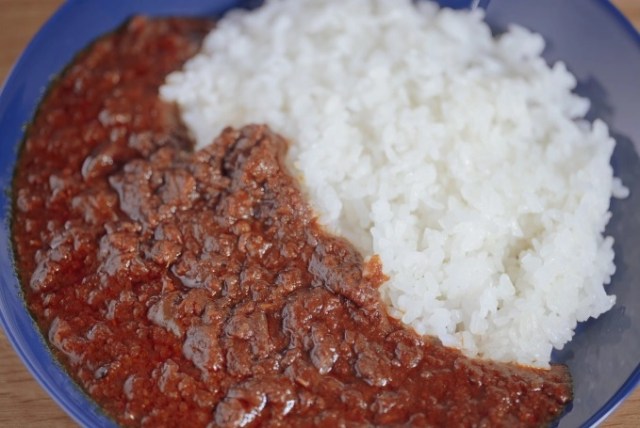Pork or beef? A peek into how Japan’s curry preferences change from place to place

What’s the default meat for Japanese curry? Turns out, it depends where you are!
Any country of a certain size will find that its cultures will shift perceptibly the further you go in a certain direction, which is why the north and south sections of countries like the United States are often regarded separately. The same, of course, is true of Japan—eastern prefectures like Ibaraki and Tokyo feel different in many ways to ones from the west like Tottori or Osaka.
One surprising difference: the meat that’s considered the “staple” meat for a curry. When you suggest making curry, the staple curry is a given and thus won’t be named, whereas more novel meat will be named—think of it like “burger” versus “turkey burger”. In eastern prefectures like Tokyo “curry” tends to mean pork curry, whereas in western ones like Osaka it’s more likely to mean beef.
神田「黒てつ屋」にて黒豚カレー頂きます
— アクセル (@hedgehog0629) July 12, 2021pic.twitter.com/aPPxgOhSgf
A survey was actually conducted ten years ago in the capital city of each prefecture to try to get to the bottom of this curry conundrum. Is there a specific cut-off point for where people think curry is typically made with pork? The results were fascinating, with Kyoto, Shiga, and Mie each declaring that beef was indispensable in a curry dish. Meanwhile, if you trek just a little bit towards the east to Nagoya the responses start leaning towards the porcine. Unlike some of the pork purists in further eastern prefectures, here cooks will cop to using beef if they don’t have pork available.
So how come Nagoya uses pork while Mie, which is less than 40 miles away as the crow flies, uses beef? The answer might be found in how three rivers lie between the two prefectures, which impacts what livestock are kept. Surveyors tried quizzing residents of different cities in Mie prefecture that lay at different points in the river. Kuwana City on the west side was 63 percent in favor of beef curry. Kisosaki City, on the east, was 60 percent in favor of pigs. Oho!
Here is where the survey team chose to zero in on Kuwana City. The city expanded to include two towns, Nagashima and Tado, in 2004. Nagashima, in particular, gave very ambiguous answers to the curry question. Suspecting that this might be where the border of pork and beef lay, the surveyor team went in person to invite the locals to cook curry at the community center on a certain date. On that date, they tallied up what meat was used in each of the 51 household’s curry and found…
25 pork curries and 26 beef curries! An almost perfect split!
The survey had a great local effect, too. A local food company, Yamamori, developed a special Kuwana City Curry for sale that incorporates both pork and beef. Now the division between common curries is a point of pride for the city.
またまた怪しげなカレーを食った(笑)天下分け目の“桑名カレー”
— やっち (@wildcat721) August 17, 2016
具に筍が入ってるのが斬新でイイね。食感も含めて意外にまいう〜でした!
ってか、桑名がポークカレーとビーフカレーの中間点なんだねd(^_^o) pic.twitter.com/2e1eE1YtRj
There are other ways in which eastern and western prefectural staples blend within this specific area. Slang like aho and tawake are both used in Kuwana City, with the former being Kansai slang for a foolish person and the latter being Nagoya slang. And Kuwana City is cool even beyond its curry border status; there is a cursed katana on display at their city’s museum, and also the world’s easiest-to-bypass ticket gate at its train station.
Source: Livedoor News/Telebi Dogatchi
Top image: Pakutaso
● Want to hear about SoraNews24’s latest articles as soon as they’re published? Follow us on Facebook and Twitter!
Credit:

0 comments:
Post a Comment